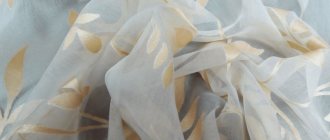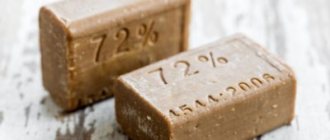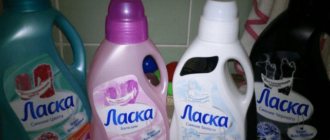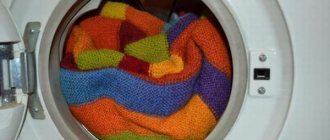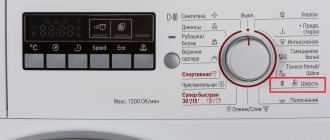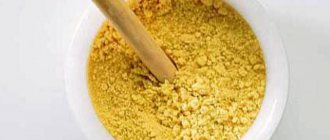Tulle is a thin translucent fabric. It diffuses the sun's rays, transforming the room and decorating the window. Compared to practical blinds, tulle curtains give the space a cozy and airy charm. Settling dust and bright sun over time spoil the appearance of the material, many everyday questions arise: how to wash tulle in an automatic washing machine, or maybe better by hand?
How to wash tulle to give it pearly whiteness or maintain its color? And if yellowness, grayness or greasy stains appear on the fabric, what should you do? Knowing the basic secrets and rules of washing, you can easily restore its original appearance. In this article you will find many practical and accessible tips for care and washing.
Determining the fabric
First of all, before washing, you need to understand what fabric the curtain is made of. Fabrics from which tulle is made:
- silk;
- viscose;
- polyester;
- nylon;
- cotton.
Modern fabrics can consist of several types of threads, for example with the addition of bamboo or wool. Knowing the composition, you can accurately choose the simplest and most effective method of care.
Polyester and nylon are the strongest fabrics, their shelf life is more than ten years, they are strong and durable. When washing all artificial fabrics, first of all, you need to monitor the temperature, otherwise they may turn yellow.
Tulle made from cotton, silk or natural threads is very beautiful, but requires delicate handling. You can wash this curtain by hand or using the delicate cycle in the washing machine.
Modern remedies for grayness and yellowness
Several types of bleaches are suitable for curtains:
- chlorine-containing;
- oxygen;
- optical.
Chlorine-based bleaches have been used for a long time. This group includes the common remedy Whiteness. Such substances act quickly, but give short-lived results. Chlorine quickly destroys the structure of the fabric, the threads become thinner, and yellowness quickly returns.
Oxygen bleaches (for example, Vanish) clean much more gently. They do not damage the structure of the material. You can easily use them more often than chlorine-containing analogues. However, substances such as stain removers are marketed. To properly bleach gray textiles, follow the instructions.
The procedure is carried out by hand washing; it is often necessary to soak the item in the prepared solution or apply the substance directly to the material. Among the disadvantages of oxygen bleaches is their short duration of action. After just a few washes, you will have to look again for methods to rid tulle of grayness.
Optical brighteners return whiteness to things or enhance the brightness of white fabrics due to their ability to absorb ultraviolet radiation in the range of 300-400 mm. The rays are converted into light with a blue tint, the wavelength is 400-500 mmk. The perception of once gray things changes due to compensation for the deficiency of blue rays. The technology is suitable for natural and synthetic materials.
Temperature
At what temperature to wash tulle depends on the composition and structure of the fabric.
- The most unpretentious curtains are made of polyester and nylon - they can easily withstand temperatures of 40-60 degrees;
- Organza, veil or muslin are very sensitive to high temperatures, so the water should be no more than 30 degrees;
- Materials made from several types of fabrics, but based on natural fibers, such as cotton, can be washed at 60 degrees. High temperature bleaches tulle made from natural fabrics well and easily removes dirt, without additional products.
Remember that when choosing a temperature regime, it is important to follow the manufacturers' recommendations for a particular type of fabric.
Next you will learn about the nuances of each type of washing.
Rules for washing tulle from different fabrics
Tulle is made from different fabrics, so general washing rules are indispensable. Familiarize yourself with the composition of the material and only then begin cleaning. The main thing is to comply with the requirements regarding the temperature of the washing water. If they are not taken into account, tulle may forever lose its original appearance.
Mixed fabrics made of polyester and natural cotton are considered the most unpretentious They are washed at a temperature of +40...+60 ℃ in the usual mode, and even old stains are removed, and light curtains are washed white without additional treatment. Polyester cannot be treated with bleaching agents.
Before washing tulle, read the composition of the fabric and the symbols on the label.
Nylon is considered one of the most durable fabrics. It is necessary to wash tulle made of nylon material at a temperature of +30 ℃, in no case using bleaches. To prevent snow-white nylon from turning yellow, it is important to clean it from dirt in a timely manner and not wash it in too hot water.
Delicate fabrics - muslin, organza or veil - are washed in a delicate mode at a temperature of no more than +30 ℃. Be sure to use a special washing cover, and if there is none, place the tulle in a regular cotton pillowcase. It is forbidden to wring out these materials, twist them by hand or iron them. chiffon are washed using the same principle . The exception is the veil, for which spinning at minimum speed and ironing at the lowest temperature are acceptable.
General washing secrets
How to wash tulle correctly? Check out the practical recommendations for any materials:
- Shake and remove dust before washing;
- It is not recommended to use chlorine-containing bleaches, they seriously damage the fabric;
- the water temperature should be no more than 40 degrees, otherwise the fabric will “shrink”;
- first dilute the dry powder in a small amount of warm water or use liquid products;
- dry the fabric in a straightened form; do not squeeze it too much or twist it at high speeds.
- You should not completely dry the tulle; it is better to hang it wet on the windows, and you can smooth out the folds with your hands.
Now check out the machine wash recommendations.
Whitening tulle curtains
Time, constantly settling dust, the sun are the factors due to which tulle loses its pristine whiteness. Gradually, the curtains acquire a gray or yellow tint, which can sometimes be difficult to get rid of. Under no circumstances should you use chlorine-containing bleaches! Chlorine has a negative effect on fabric structure.
Therefore, it is recommended to give preference to oxygen or optical brightener, although home remedies also do a good job. The choice of bleaching method depends on the material.
Lace curtains, as well as curtains made from materials based on natural threads, withstand the effects of hydrogen peroxide well. Perhydrol is one of the most effective and affordable bleaches.
When machine washing, you need to pour 30 ml of hydrogen peroxide into the powder compartment. Organza and other delicate fabrics are bleached with ammonia, which is added to the powder or conditioner in an amount of 20-30 ml.
If you plan to use blue, you should know that it is used only for preliminary soaking. Since the quality of the blue varies, there is no exact dosage. Therefore, you need to focus on the color of the solution. It should have a bluish tint.
Machine washable
For owners of advanced modern washing machines, it is enough to turn on the special “for curtains”, “delicate” or “silk” mode and any curtain will be washed carefully.
How to properly wash tulle in a washing machine? For regular automatic models, use the “hand wash” mode at a temperature of 30 degrees. There are several recommendations for proper machine washing:
By the way, the “wool” mode is great for curtains and tulle, so you can wash and preserve the fabric as carefully as possible.
- How to wash tulle from grayness? Pre-soak it for several hours or overnight in water, adding salt (1 tbsp) and powder;
Salted water is also perfect for colored fabrics, this will make the curtains brighter.
- Fold the tulle fabric inside the drum neatly and evenly, no need to crumple it, so the number of folds will be minimal. It is best to place the tulle in a special case to preserve the integrity of the fabric and protect it from accidental damage in the drum;
- Wring out the washed item at very low speeds (400-500), otherwise the curtain may turn into a crumpled lump;
- Choose the temperature depending on the composition of the material, but not higher than 40 degrees;
- Replace the dry powder with liquid gel or shampoo, add a very small amount, half the usual volume. For curtains, foaming should be as low as possible.
When the tulle wash is complete, you can turn on the extra rinse cycle to thoroughly remove the detergent.
Which detergent to choose
Special detergents are produced for washing tulle curtains. They have a complex effect on the tissue:
- bleach carefully (because they contain oxygen bleach);
- starched (contains starch);
- prevent the formation of static electricity (contain an antistatic agent).
Some industrial products may contain optical brightener or blueing agent, which can give white fabric a snowy tint. They produce little foam and are ideal for machine washing lace curtains that require delicate cleaning.
The most popular specialized products:
- Super White Tulle Plus from Frau Schmidt (Germany) – 150 rubles;
- “Bingo Tulle” (Türkiye) – 50 rubles;
- “Cashmere Elixir for tulle and curtains” (Russia) – 65 rubles;
- Clever Gardinin from Clovin (Germany) – 120 rubles;
- Dr. Beckmann for curtains and curtains (Germany) – 320 rubles.
These products perfectly remove dust, soot, and nicotine deposits that settle in tulle and whiten it.
Liquid detergents for washing synthetics, wool and silk are also suitable:
- gel “Vorsinka” (Russia) – 70 rubles;
- “Laska Glow of White” (white bottle) or “Laska Care and Freshness” (blue bottle) from Henkel (Germany) – 245 rubles;
- Chirton Gel concentrate (UK) – 200 rubles.
If it is not possible to buy special products for washing tulle or delicate items, you can use baby powders. They carefully remove dirt and have a whitening effect. Any liquid detergent or capsule for washing white items will also work.
Tourmaline balls, which are placed in the machine drum along with tulle, can enhance the effect of washing gel or powder. They attract dirt, improving the quality of washing.
Handwash
Many housewives wash tulle by hand, so the stains are better visible and the possibility of damaging the fabric is minimal. In addition to using regular powders, you can use natural products with the addition of bleaches.
How to wash tulle to make it white at home? Below we will look at effective, folk secrets of washing without resorting to chemicals.
By the way , if you don’t have a thermometer, and for washing you need to make the water 30-40 degrees, use your elbow as a hint. Touch the water with your elbow and feel it, it should be pleasant. If it feels cold or hot, adjust it to a comfortable state. This folk method has also been used for a very long time and has been successfully used by parents before bathing small children; they also require a temperature of no more than 40 degrees.
How to wash by hand?
If you are not sure that the curtains will withstand machine washing, it is better to refresh them by hand at home. It's easy to do:
- Soak. Make a lukewarm soap solution with washing gel or dishwashing detergent, place the tulle in the resulting composition, and leave overnight. There is no need to fold the fabric before the procedure.
- Wash. Drain the dirty water, add clean water, and add detergent again. Gently remember the material in the water, trying not to leave any kinks.
- Rinsing. Fill a bathtub or basin with cold water, place a curtain, and rinse. Repeat the process several times until the soap stops coming out of the structure. Conditioner can be added to the last bowl to achieve the best effect.
- Drying. Without squeezing, hang it over the bathtub or basin.
- Ironing. Act quickly, not allowing the tulle to dry out (then the lightweight fabric can be restored to its original form at a minimum temperature).
Advice! To steam tulle with a steam generator, it’s easier to immediately hang it on the curtain rod, let it sag a little under its own weight, and steam it on the spot.
Complex contaminants
What is the best way to wash tulle and very dirty curtains, especially kitchen curtains, because they absorb not only dust and odors, but also soot? There is a huge variety of methods; we will look at the simplest and most effective ones.
- If there are individual grease stains on the tulle, to remove them, sprinkle this area generously with starch before washing.
First of all, to make the tulle white, try soaking it in warm water with the addition of soda and salt for several hours or overnight.
Video on the topic:
Ways to clean curtains without removing them
If the curtains are not too dirty, then they can be cleaned of dust without washing, without removing them from the curtain rod. There are several different ways you can freshen up a curtain.
Dry cleaning
Dry cleaning is done using a vacuum cleaner with a special attachment. This method is mainly suitable for tapestry, but other types of fabric can be cleaned in this way. The main thing is not to spoil the delicate texture of the material with a brush.
Often, cleaning with a vacuum cleaner is aimed at the upper part of the curtains, where a large mass of dust accumulates and where it is difficult to reach with a regular rag.
Wet cleaning and steaming
Wet cleaning is carried out using a soap solution and a sponge. This cleaning is suitable for roller curtains. Steaming is performed either with a steam generator or with an iron that has a vertical steam supply function. During exposure to steam, the curtain is not only smoothed out, but also disinfected and refreshed.
Steaming is best done on material that is not afraid of moisture and does not shrink when the temperature increases. However, if the curtain is very dirty, then this method of cleaning the product will not work.
How to wash curtains with salt
This method can clean white fabric from dirt, remove yellowness or an unpleasant gray color.
How it's done:
- water of the required temperature is poured into the container;
- salt is poured in at the rate of 1 liter of water - one tablespoon and a little powder;
- stir thoroughly until completely dissolved;
- Now you can dip the tulle into this solution.
For minor stains, it is enough to soak the tulle for 1-2 hours and then wash it by hand or in a washing machine using powder.
For curtains with heavy soiling, yellowing and dirty spots, you need to do it differently:
- Wash first in regular powder, and then soak overnight in a salt solution with the above concentration;
- In the morning, wash again with powder and rinse well.
Remember that you can only use coarse rock salt, not fine “extra” salt and not iodized salt!
How to bleach tulle at home
White tulle is always in fashion, but it has one drawback - it quickly loses its whiteness. Is it possible to get rid of the grayness and return it to its original shade? Next, we will talk about proven methods that are easy to try at home.
To quickly wash tulle that is not very dirty , you will need baking soda. Make a soda solution (1 tablespoon per 8-10 liters of warm water) and soak dirty curtains in it for several hours before washing. Then rinse the product thoroughly and load it into the washing machine drum.
How to wash tulle so that it is white? remove slight yellowness . Mix the salt in warm water and soak the yellowed curtains in this liquid for a couple of hours, and then rinse in cold water. Recommended solution proportions – 1 tbsp. l. salt per 1 liter of water. After rinsing out the saline solution, wash the item with a delicate detergent.
Tulle curtains in the kitchen are often covered with splattered grease. To remove grease stains from delicate fabric, use starch. Sprinkle it on the stain, leave for 5-10 minutes, then rinse off the remaining powder. For greater effect, it is recommended to carefully wash the tulle with bleaching soap, and then wash it using one of the methods discussed above.
Folk remedies will help restore the original whiteness of tulle
To achieve a snow-white glow, you can use a method that has been proven over the years. Wash the tulle as usual, and during the rinsing stage add a little blue (the water should take on a barely noticeable blue tint). You can buy the product at a hardware store. The effect is noticeable from the first use. Also, instead of a rinse aid, you can use a weak solution of medical brilliant green. Turn the water slightly green and rinse the white tulle well in it, without leaving it in the solution for long.
When using brilliant green, wear gloves and act slowly so as not to spill the product - it will be difficult to remove such a stain.
If you trust store-bought bleaches more, choose gentle products without chlorine. Oxygen bleach or a product for synthetic fabrics will help restore the whiteness of tulle. Before use, carefully read the instructions and follow the indicated proportions.
We hope that our useful tips will help you get the desired result when washing tulle.
Whitening with soda
This is a very simple and affordable method, since every housewife has soda. Thanks to soda, you can whiten gray and yellowed tulle and remove greasy stains.
Here is the simplest recipe with this remedy:
- mix 100 g of any powder and two tablespoons of soda;
- pour this mixture into a bowl of warm water and stir;
- dip the tulle in this solution for half an hour;
- then wash by hand or machine.
Please note that baking soda only washes effectively when soaked!
Basic recommendations
Snow-white curtains can transform not only windows, but also the entire interior of a living space. This requires regular washing of tulle - at least 4 times a year. This will get rid of dust, prevent deep accumulation of dirt, and discoloration to yellow or gray.
This is especially true for curtains that are placed in the kitchen area. These tulle curtains cannot be cleaned with simple ingredients: warm water and detergent. In this situation, the housewife will need bleaching or chemical-containing products.
To avoid such negative consequences, we recommend that you remember how to wash tulle correctly:
- Before soaking the textile product, it is necessary to remove dust. Housewives can shake it several times on their own balcony or when going outside. This will prevent the accumulation of dirt particles during the washing process;
- Avoid bleach that contains chlorine. He is able to return the white tone of tulle in a matter of minutes, but thin fabrics wear out faster;
- do not twist the tulle curtains. Allow some time for the water to drain naturally. If the housewife wants to speed up drying, it is recommended to gently wring out the curtains;
- wash the tulle at the optimal temperature. Airy fabric washes well at 35-40, and polyester - no higher than 60 degrees Celsius. Increasing the threshold will cause the tulle to “shrink”, and cool water is simply not able to cope with deeper dirt;
- It is not enough just to wash the curtain. In order for it to be snow-white, it is important to adhere to proper drying. High temperatures cause a yellow tint to appear on white textiles. Therefore, it is forbidden to smooth out folds with an iron; the optimal solution is to hang wet tulle on the curtain rod. Under its own weight, the fabric will smooth out and dry in a short period of time.
It is extremely difficult to get the correct water temperature when washing by hand. It is possible to use a special water thermometer or rely on your own feelings. The palm and fingers are not able to accurately indicate the temperature, but the skin on the elbow has the necessary sensitivity. If the “test” with your elbow brings you a comfortable feeling, you can wash it. Otherwise, we recommend adjusting the temperature.
Whitening with brilliant green and salt
A non-standard and proven method for returning blinding whiteness to curtains.
How to properly wash tulle in this way so as not to dye the fabric an emerald shade? Read carefully the sequence of preparing the solution:
- Dissolve two tablespoons of salt in half a liter of warm water;
- add 15 drops of brilliant green, stir thoroughly and leave for 5 minutes until a sediment forms;
- Now you need to very carefully strain the solution to remove the sediment, which can stain the fabric;
- the finished liquid is added to the water during the last rinse.
While rinsing, soak the curtains for 5 minutes.
- periodically turn over and wring out the fabric to evenly saturate it with the composition;
- now remove from the water, squeezing gently, without twisting;
- To dry, hang flat.
Rules for spinning and drying
After the washing machine has finished washing the tulle and the program has entered the spin phase, the drum speed should not exceed 400 rpm, otherwise the material may be damaged.
If there is such an opportunity, then it is better to refuse spinning. Moreover, after extensive rinsing, the tulle retains quite a lot of moisture.
But one of the rules for washing and drying curtains warns that you cannot wring or twist them, otherwise wrinkles will appear on the fabric.
Carefully remove the washed curtains from the machine without squeezing them, straighten them and hang them. If you need to iron curtains, we do it only at a low temperature and preferably through gauze or other natural fabric.
Bleaching with hydrogen peroxide, ammonia and blue
In a similar way, you can use hydrogen peroxide, ammonia and blue instead of brilliant green. Here are the main ways:
- 1 tablespoon of ammonia is added to a bucket of hot water plus 2 tablespoons of hydrogen peroxide. Stir the mixture, soak the tulle for 15-20 minutes and rinse well.
Work only with rubber gloves!
The use of blueing gives a bright whiteness to white fabrics. To do this, just add a small amount of blue to the last rinse water and let it sit for a few minutes.
What to do with old tulle?
Over time, the material may turn yellow or become covered with a gray coating - to restore it to its former freshness, one powder (even a special one!) will not be enough. Try one of the effective folk methods:
- Salt. For 5 liters of hot water: 100 g of salt, 1 tablespoon of soda, 70-100 g of washing powder. Mix all ingredients thoroughly, dissolve in water, let the solution cool and place a curtain, leaving for 5-6 hours or overnight. Then wash using any of the methods described above.
- Peroxide. It is known for its delicate whitening effect, and by using hydrogen peroxide in combination with ammonia, you can restore freshness to even the most washed-out curtains. Mix 5 liters of hot water with 1 tablespoon of ammonia and 2-3 peroxide. At what degrees to soak depends on the base: cotton tulle is placed in a hot solution, any other - in a cooled one. After 30-90 minutes, wash using any of the methods listed above. The method is effective, but be prepared for a strong smell of ammonia in the house.
Ready-made whitening products
Using ready-made chemicals, you can wash tulle in a machine to remove even heavy stains.
There are several main types of such additives:
- Optical brightener - consists of special particles that settle on the fibers of the material and create a visual effect of whiteness. Used exclusively for white fabrics and can lighten curtains made of any fabric;
- Oxygen bleach - has the effect of visual whiteness and does not damage the fabric. Applicable for colored items and low-temperature machine washable types;
- Chlorine-containing compounds have an aggressive effect on delicate fabrics and can damage them. Whether it is possible to wash with such aggressive agents is up to you to decide, but nowadays housewives use them less and less, preferring gentle bleaches.
Modern industry produces a variety of bleaches for artificial and natural fabrics. Before purchasing, read the instructions carefully and use the appropriate products carefully.
Now, knowing many tips and recommendations, you can quickly and easily wash any dirt from the curtains and restore their natural color.
Useful tips
General washing tips that will help maintain the original whiteness of tulle for a long time:
- before soaking, shake the tulle to remove dust;
- do not use chlorine-containing bleaches, which leads to rapid wear of the material;
- after washing, do not twist the product, but allow the water to drain naturally;
- The optimal temperature limit when washing light tulle is 35-40 ᵒC, otherwise it will shrink.
You will find maximum useful information about washing clothes and various fabric products here.
Is it possible to wash tulle with hooks?
This is usually the first question that arises after deciding to wash both curtains and curtains. Because in the memory of every housewife there are vivid memories of how much effort is required to secure curtains and curtains to the curtain.
You will be surprised by the answer, but practice has confirmed that you can wash it this way. Hooks usually have latches that make them relatively safe to have in the wash.
Of course, you can simply load everything you need into the car, select the desired mode, and go! However, it is better, especially in the case of washing with hooks, to use laundry bags or a regular pillowcase. This way you will further protect both the machine and the product.
Features of choosing a program in a washing machine depending on the manufacturer
Washing machine models from different manufacturers have their own set of basic and additional programs. Each one has a mode for washing tulle.
"Ardo"
Manual - 30 °C.
Ariston
Delicate wash: 30 °C, maximum load - 1 kg.
Beko
Hand wash: 30 °C, 40-55 minutes.
Bosch
Shirt and bow tie icon. The program is intended for delicate fabrics. The water is heated to 30 °C, the washing duration is 40 minutes.
Candy
Delicates: 40 °C, maximum load 1.5 kg. Hand wash: 30 °C, maximum load 1 kg.
Electrolux
Curtains: 40 °C, 100 minutes. Wool or hand wash: 40 °C, 55-56 minutes. Silk: 30°C, 40 minutes. Delicate fabrics: 40 °C, 60 minutes.
Indesit
Silk: 30 °C, 55 minutes, maximum load 1-1.5 kg.
LG
Delicate: 30 °C, 60 minutes.
Samsung
Wool: maximum load 2 kg, duration 50 minutes.
Zanussi
Delicate and hand washable.

